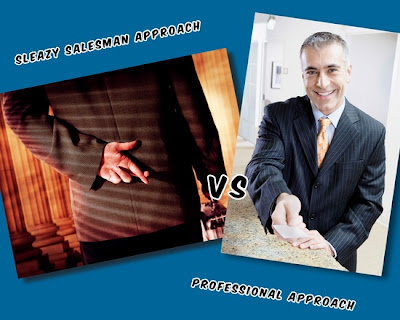We had a horrible experience with NuWave Signs and Printing (Top Class Signs and Printing is their retail front). They are unwilling to work with their customers, and do not care about building long-term relationships. After several years of working with many different vendors, this will be our FIRST written complaint against one.
We called in for an order of silk laminated business cards with rounded edges. They said they would put in the order, but needed an email sent to them with the order specs. They told us what to say in the email, so we wrote:
“I want 500 silk laminate business cards with rounded edges.”
They sent us an invoice that had a product description saying “OFSLBC- 500qt 4/4, full color both sides, silk laminated business cards on 15PT. Production time 9-11 days.” We approved the invoice, thinking we were approving a price.
3 days later, we called to get an update on the order, and they forgot about us (they didn’t seem to have our information logged in). They barely went into production 3 days later, after we called. About 10 business days later, we got the cards, but they DID NOT have rounded edges as we requested both verbally, and written via email. Silk Laminate cards are expensive, premium cards (about 3-4 times more expensive than normal business cards)… so it wasn’t a cheap mistake.
Their response: “you approved the invoice, so there’s nothing we can do”! We tried talking with the supervisor, but she was not available. We were promised that she we call back – she didn’t. The supervisor dodged us for a day and a half, and when we finally got a hold of her (we had to keep calling them), her solution: the same as what we were already told.
They expected us to pay to have them shipped back, pay full price for rounding the corners (it apparently wasn’t on the invoice), and then pay full price to have it shipped back again! In other words, “we will do absolutely nothing for you, and you will have to pay for OUR mistake”. On top of the original card price, we are looking at spending an additional $35+ dollars in shipping as the cards had to be shipped a total of 3 times. We have done business with them in the past, and as a graphic design company, we had several jobs for them in the future. However, this meant nothing to NuWave Printing.
I told them that I would ship the cards, but write an email to them expressing my disappointment, and explaining the situation. I told them to please have the owners read the email, because maybe they would make a different decision knowing the circumstances. I told them that either way, I would need the cards because my client already paid for them, so I would pay if I had to, even though it wasn’t right. In the email, I said that I understood that we couldn’t, nor would we even attempt to rectify this issue legally, however we would file a complaint against them voicing our experience with NuWave if they refused to work with us at all. We also said, “We never do stuff like that, and I really do not want to start… It’s not about the money with us, it’s about developing good business partnerships. I don’t want to have to find another vendor, and would prefer to continue doing business with you, but your solution to this problem is unacceptable. I kindly ask you to reconsider, so that we can move forward with a good, healthy business relationship.”
After sending the email, I heard no response for 3 days, until I followed up. They finally replied, “Unfortunately we don't respond well to threats feel it might be better to end this business partnership, thank you and all the best.” That’s it! Just like that. I asked, “so what are you going to do about the cards that were already shipped to you?”
Their response: “If you want them returned you will need to pay the return shipping which is probably around $12-15.”
My reply: “I want them fixed. If you’re not going to work with me on it, then you are forcing me to pay. I don’t want to, but I have no choice – my client already paid. You said in a previous conversation that you could extend a 10% discount for the trouble… please do not go back on what you said, and offer this. Either way, I need the corners rounded and I can’t wait any longer. They are way past deadline already. I called the office, and they said you would get back in at 2pm your time. Please make a call before then, as I have my client asking for his cards.”
Their Final Word: “Based on how you chose to threaten us we are no longer willing to continue doing business with your company. It was very inappropriate and rude. We were willing to work with you but you thought treats and insults would get you results. As mentioned earlier the most we are willing to do is ship it where ever you chose, we do not need this kind of negativity. Please advise asap what you would like us to do with your cards.”
This is just a warning to anyone considering doing business with NuWave Printing, or their Retail Front “Top Class Printing” (they are the same company). They do not care about their customers, nor are they willing to work to make things right if there is ever an issue with an order – even if it’s their mistake. There are several different companies that we have found that are better to work with, quicker on delivery, and even more reasonable on their prices.




